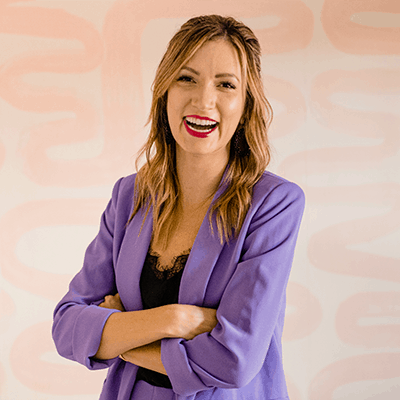Tune In to the Episode: Apple Podcasts | Spotify | Stitcher
I often see many content creators and entrepreneurs struggling to build their business, always looking for a new strategy in hopes that it’ll lead to their big breakthrough, only for it to fall flat.
Been there, done that, my friend.
When I first started my business I tried all.the.freakin’.things in order to grow my audience and my income.
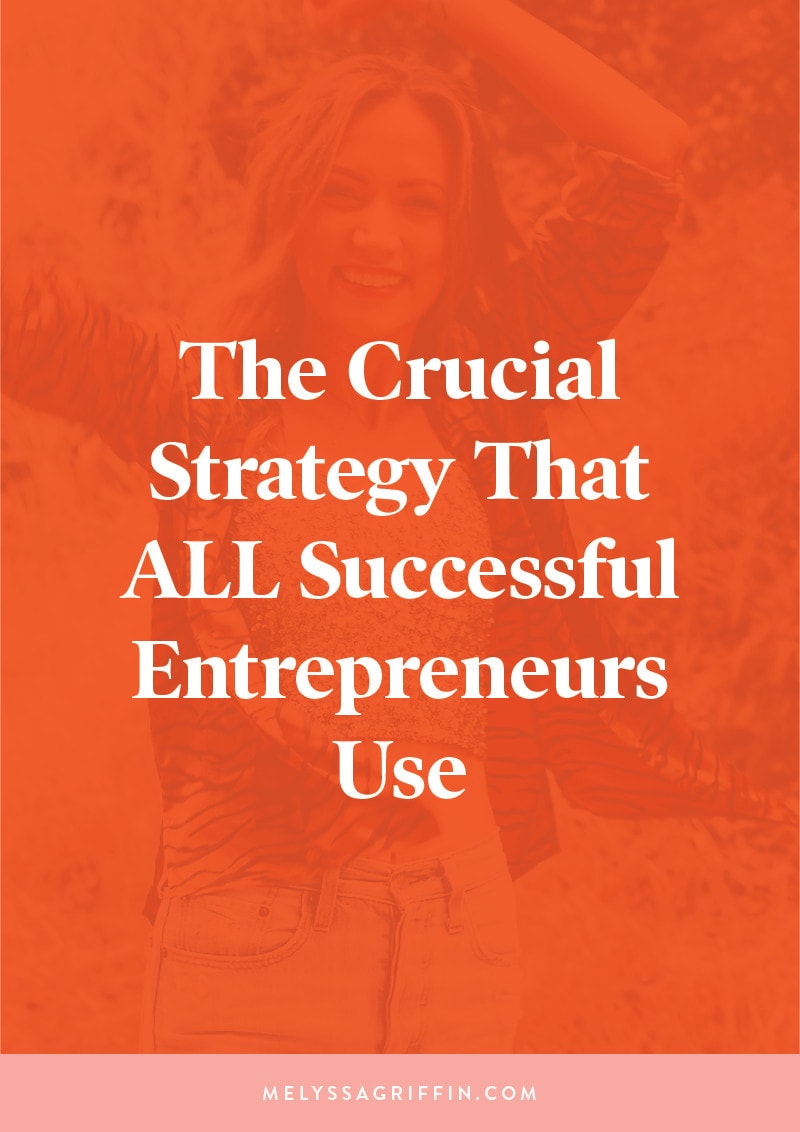
Creating content daily? Check.
Hosting webinars (even when I was terrified of being on video and looked like a deer in headlights)? Double check.
Having dozens of freebies in my resource library? Checkity check.
That’s fine, but I’m here to tell you that no strategy will give you the results you’re dreaming of if you haven’t implemented this one thing in your business. So listen up.
Do you know what every successful business has in common? *drumroll, please*
They solve problems.
Now before you close down your laptop because this isn’t the revolutionary concept you were hoping for, let me tell you something. It really isn’t revolutionary, or ground-breaking, but it is the cornerstone of every single successful business out there. Including yours.
It’s such a foundational strategy and yet many entrepreneurs skip it altogether which leads to not so share-worthy results. Don’t let this be the reason you spend years wondering why your business isn’t growing or questioning whether you’ve got what it takes to be an entrepreneur after all.
Today I want to show you how to get clear on which problem you’re solving for your audience and how to use that information to build a profitable and sustainable business that stands the test of time (and keeps your walls spaghetti-free).
STEP 1 – FIND OUT WHICH PROBLEM YOU’RE SOLVING FOR YOUR AUDIENCE
Now, the problem you solve for your audience doesn’t have to be big, or incredibly life-changing. It doesn’t need to be big or small, it just needs to be a specific challenge that the people you want to help are experiencing.
For example…
One of my mastermind members has a business selling cookies.
- Her audience’s challenge: not knowing how to bake cookies properly and feeling awkward at family events when not even the children with the sweetest tooth want to eat their cookies.
- How she’s solving their problem: an online course teaching them how to bake such irresistible sugar cookies that their relatives will fight each other to eat the last one.
Or, another client of mine has a business helping students get admitted into their dream college:
- Her audience’s challenge: not knowing where to start to prepare and apply for the college admissions process or how to increase their odds of being admitted into their dream school.
- How she’s solving their problem: teaching them the tactics to get admitted, what to put in their applications, preparing for interviews, etc.
What is the problem you are uniquely prepared to solve for your audience?
“But how do I know which problem to solve for my audience, Melyssa?”
I hear you asking across cyberspace.
Well, my friend, grab your favorite gel pen and a notebook because I’m about to share with you my three favorite strategies to get crystal clear on which problems your audience has. And the best part about these strategies is that you then get to use their own language in sales pages, sales calls, emails, etc.
Here’s the thing, your audience may describe their problem in a different way than you would, so it’s important that you use their exact language when describing their challenge so that it speaks directly to the people you want to serve and they feel like “omg this person just totally gets me”.
Let’s dive in!
Strategy #1 – Survey Your Audience
If you already have an audience on your website, email list or social media, you can create a survey to figure out what they need from you. I recommend that you keep this survey as brief as possible.
I never add more than 10 questions in my surveys to make sure it’s easy to complete. But you only need these two questions to collect the valuable info you need from them:
- What’s the goal you want to achieve related to [topic] and what is standing in your way from achieving it right now?
- You’ll learn what they’re trying to achieve, what their goals and aspirations are and why it’s important to them.
- It tells you all of the problems your audience is having, which you can then turn into content for your blog, Youtube channel or podcast.
- What’s your single biggest challenge related to [topic]?
- It’s worded a different way and it’ll give you slightly different answers, with more feedback and nuanced details.
How do you create + send out a survey?
Create your survey on a platform like SurveyMonkey, Typeform, or Google Forms and send it to your audience through your email, social media or any platform where you can engage with them.
Now I don’t recommend using Instagram stories’ “question box” instead of an actual survey, because you’re likely to get a one-word answer and it won’t give you the best results.
You want your audience to go on and on about their problem because it lets you know this is a real challenge for them, and something they’re truly struggling with. And it also gives you more information about how this problem shows up for them in their lives.
And most importantly of all, it allows you to take their exact copy and use it in your messaging. Woohoo! 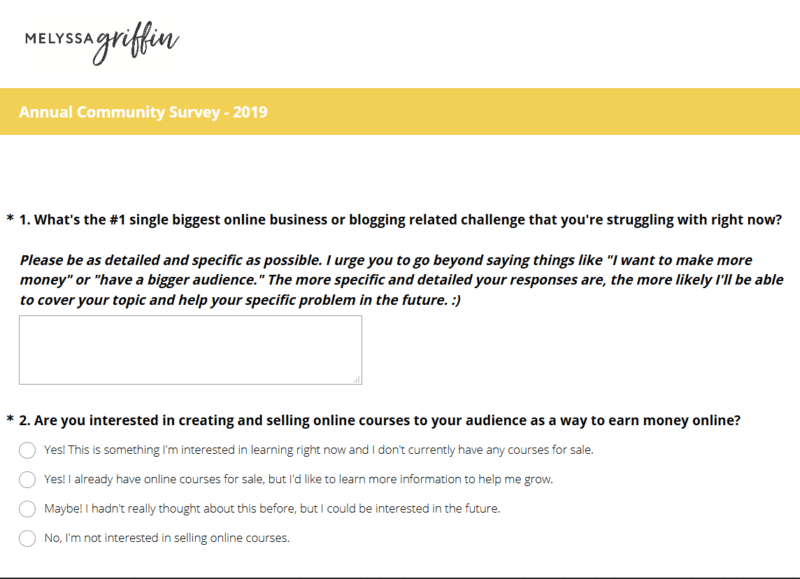
What if you don’t have an audience?
In that case you can send your survey to those people you feel are your ideal audience.
- Do you know someone from your personal life who fits that profile?
- Are you a part of any Facebook groups in your niche? Ask the group owner if you can post your survey in the group to get some feedback.
- Do you follow anyone on Instagram or social media that you know are your ideal audience? Reach out and ask them “hey, would you mind taking this survey for me?”.
By the way, I created an entirely free, 5-day at-home digital retreat called Limitless Entrepreneur. It’s all about creating a new income stream in less than a week, as well as reprogramming the beliefs that are keeping you from a no-limits business and life. Click the image below to sign up, it’s free!
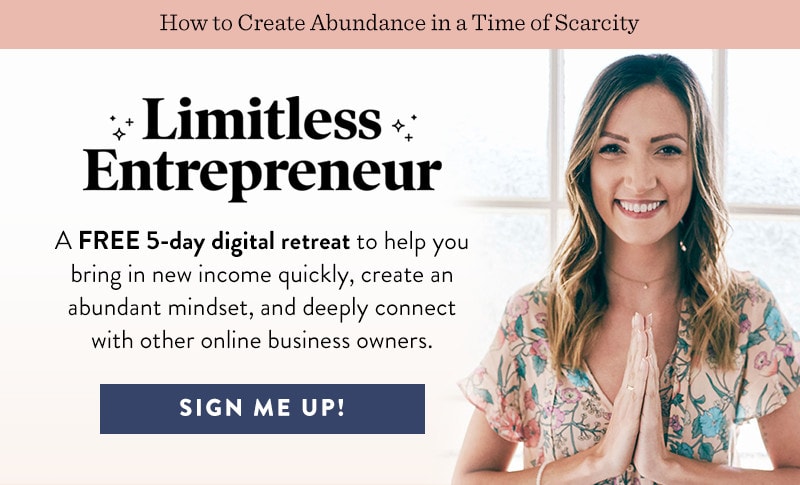
Strategy #2 – Put Together a Focus Group
Your survey should have given you ah-mazing feedback, and now it’s time to take the next step. You’ll put together a focus group, ideally by selecting 4-5 people who took your survey.
Reach out to them and set up a Zoom meeting with everyone included. This will be your focus group where you get to ask questions related to this challenge and see how it shows up for them and how they bounce ideas off of each other.
All you need to do is come up with a few questions that are targeted at getting them to talk more about their problem that they’re having.
I recently hosted a focus group myself, and it was so helpful to get inside the mind of the people that I want to serve, hear the words that they use and how they’re different from the words that I would’ve used to describe it. Because they’re the ones experiencing it and I’m the one teaching it, so we’re looking at this thing from different angles. I got to see how they described it, how they bounced off of each other’s ideas, how they concurred when someone said something that was super relevant to what they were all going through.
It was incredible. 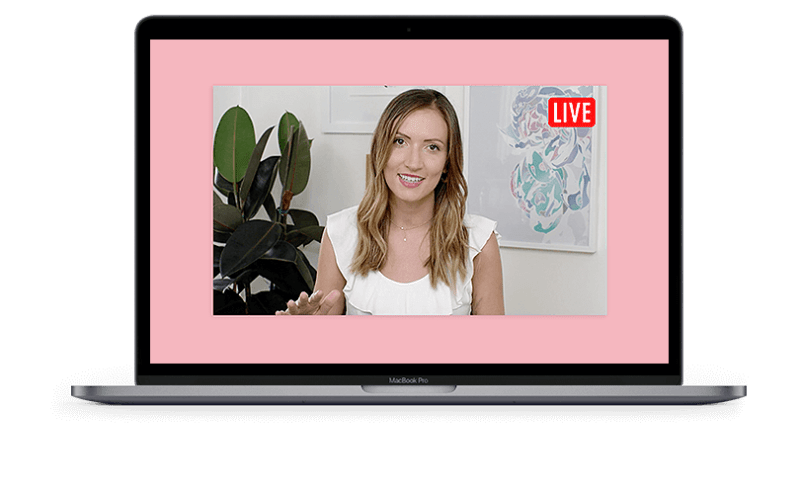
After your focus group call ends, get a transcript of the call (you can use rev.com or otter.ai) and read through it to identify key elements like:
- What words did they use the most?
- When you asked a specific question, what did most people respond?
- What was surprising or different from what you expected?
You’ll get such valuable insights on how to tackle their particular problems, and you also get to use their own language in your marketing materials, making them instantly relevant to the people you want to serve (ever wondered how other entrepreneurs are able to make you feel like they’re reading your mind?).
It’s going to be very helpful in guiding you and showing you how you can solve this problem for people.
Now, if you just guess what they need help with or how they describe their challenge, you’ll struggle to help them achieve strong results, because you don’t yet understand all of the different angles and nuances of this challenge that they’re facing.
Strategy #3 – Hang out with them one on one
Alright so lastly you want to follow up with some of your focus group members and get their input on additional things.
For example, I followed up with members of my focus group to get their feedback on the title of an online course I’m working on to see what they gravitated towards the most. And while the focus group is immensely valuable, there’s a chance that the ‘groupthink’ effect will take place and the members will focus on a single aspect of a problem, and then you go down a rabbit hole. That’s why I recommend that you follow up with them for one on one calls after the focus group call ends.
These can be short, 15-20 minute Zoom calls where you ask them questions like:
- How does this problem show up for you?
- How do you feel when you experience this problem?
- What would it feel like if you didn’t have this problem anymore?
- What have you tried to solve this problem that didn’t work?
The beautiful aspect of these one on one calls is that they feel safe to open up to you and be vulnerable. So you’ll be able to hear more personal stories about how this problem is showing up for them and very nuanced ways in which this problem resonates inside of their own life. And these are going to be so invaluable to you as you create free and paid content to solve this problem, and also your marketing materials.
Pro tip: be sure to also get a transcription of these calls so that you can read them through like you did with your focus group call.
Alright, so now that you have all of this information on what your ideal audience is struggling with, how this shows up for them, what the goal they’re trying to achieve is, how they want to feel, etc.
What do you actually do with this information?
Well, you can use it to create marketing, branding, sales pages, sales copy, sales calls, etc. But also to create free content.
So let’s dive in!
Step 2 – Choose A Primary Content Platform
Creating free content consistently will help you attract your ideal audience and get them on the path to solving their challenges.
I recommend that you choose one of the three main content platforms: a blog, a podcast or a Youtube channel.
And you may be wondering… Why these? These three platforms allow you to create evergreen content that can be found by search engines.
For example, content you post on Instagram expires after 24-48 hours and people won’t be able to find it after that time. But for content like blog posts, podcasts or videos you’re working with some of the biggest search engines out there: Google, iTunes, Spotify, Youtube, Pinterest, etc.
When you leverage the power of these search engines, your content can be found at any time if you optimize it properly. Even years after you posted it!
And I know you’re the kind of person who works smart, not hard, sweet pea. Choosing a primary content platform that taps into this search engine potential will be key to growing steadily without working your buns off.
You should start with one primary platform, but you can add more over time as your team grows and you can expand. Don’t feel like you need to do all three at once.
Step 3 – Create Content Consistently
Now, the most important element is to post on this primary platform consistently. So decide how many times a month you’ll post new content and be sure to stick to that schedule. Once a week is a good frequency.
Use all of the research and insights you gained from those calls to create content that resonates with your audience. Everything they shared with you on those calls could be turned into new pieces of content (score!). Why guess or break your mind trying to come up with ideas to cover in your content when you can go to the source?
Ask your audience (like you did in Step #1) and create pieces of content in the specific areas your ideal audience told you they’re struggling with.
You want to ask yourself “If this is their specific problem, how do I solve it for them?” and that becomes your free content.
Step 4 – Create a lead magnet on the topic
You want to use your free content to build your email list. Email marketing is the best platform to grow an audience on because you own it.
Unlike social media, where you’re only “renting” the platform and you don’t own your followers.
Why grow your email list?
- You own it, and you can take your email list to any platform of your choice, at any time.
- It’s direct, there’s no algorithm deciding who sees your content and who doesn’t. Your emails will land on your audience’s inbox chronologically.
- It’s personal, you have your subscribers’ full attention when they open your emails and you don’t have to compete against other people’s posts or distracting ads.
Grow what you own, and that’s your email list.
That’s going to be your biggest asset as an online business owner!
And how do you grow your email list?
Easy! You solve problems by creating lead magnets or opt-in freebies. These are free bonuses or extra content that you give to people to help them continue solving their problems. When you create a piece of content, create a lead magnet or a freebie that corresponds to that piece of content they just consumed and offer it to them if they subscribe to your email list.
For example…
In this blog post I share 5 steps to Build Your Email List, and inside I’m offering a free bonus or “content upgrade” that amplifies what I covered in the post and helps my people take action and see great results. In this case, it’s a PDF checklist with a list of the steps they need to take to grow their email list.
And because the topic of the “content upgrade” or freebie is so closely related to the topic of the blog post, people are much more likely to sign up to my email list to receive it. Sweet! Here’s how that looks:
Some more examples for ya!
- If you’re teaching your audience how to meal prep for the week, you could offer them a meal plan printable they can fill out with their own information
- Or if you help people pay off their debt, you could offer a simple spreadsheet to help them keep track of their income and expenses
- Or if you’re helping people discover their passion in life, maybe you could offer a workbook with thought-provoking prompts to do self-reflection
So now you’re growing your email list with people that are your ideal audience and want you to solve this particular problem for them.
Now you’re in the perfect position to come out with a paid product or an online course to solve this problem for them in a transformational way.
Step 5 – Create A Course On The Topic
This is where your online course will come into play.
Your online course is the pinnacle of solving this problem for them. You’ve worked your way up into more and more high touch, problem-solving capabilities.
You started with your free content, your lead magnet, your email list and now they’re purchasing your online course where they’re getting this problem solved for themselves.
Now I want you to think of this whole process. The thing that connects all of these points together is the fact that you’ve been solving a problem for your audience this whole time.
You’re creating an impact for people whether they end up purchasing your course or not. You’re helping so many people with something that’s been a major struggle for them for quite some time.
Want to learn more about creating an online course for your business? I’ll be talking about online course strategies on the blog and podcast next week. Stay tuned!
In conclusion…
I know this post is quite meaty, but it all boils down to finding out which problem you’re solving for your audience and actually creating content that solves that problem.
What are those problems your people are having, and how can you actually do research on the nuanced ways that they talk about that problem through surveys, focus groups and one on one calls? Use that information to create your content and products for the future.
If you do it, it’s a surefire way to grow a successful business.
But if you simply guess, or assume you know what they need, you’re likely to create content that doesn’t quite hit the mark and feels lacking in some way.
So I encourage you to do your research and discover what those challenges your audience is facing, and use it to influence the other decisions you make moving forward in your business. I promise it’s going to get you better results.
Because this topic is so important for all content creators and entrepreneurs, I decided to record a special bonus podcast episode over on Limitless Life™. Tune in to hear me dive even deeper!
Listen to the episode below:
Links from the episode:
- Register for the free, at-home Limitless Entrepreneur retreat here!
- Follow me (Melyssa Griffin) on Instagram for honest conversations about business, mindset, and my life.
- Follow the Limitless Life™ Podcast on Instagram for new episode releases and wisdom on how to live a life with no limits.
How to subscribe + review:
Want to be the first to know when new episodes are released?
Also, podcast reviews are pretty darn important to the iTunes algorithm and the more reviews we receive, the more likely we’ll be able to get this podcast and message in front of more people. I’d be extremely grateful if you left a review right here letting me know your favorite part of this episode.
Share on social?
Did this episode help you expand what’s possible for your life or business? Do you think your social media followers may learn something, too? I’d be forever grateful if you shared it on social media. 🙂 If you do, tag @melyssa_griffin and @limitlesslifepodcast so I can repost you! Woohoo!
Thank you SO much for being here, sweet friend. I’m honored to walk this journey with you.
See you in the next episode! xoxo Melyssa
Read the Episode Transcript HereWhat is up my Limitless Life™ family?!
So I wanted to do a bonus episode this week and I’m actually gonna be doing a bonus episode next week too, because this podcast is all about mindset and personal development for entrepreneurs helping you to get through the fears that might be holding you back from the limitless business in life that you dream of creating. But I know that there are also some business tactics that could be helpful for you to learn if you want to actually get really amazing results inside of your business. And since I’ve been running my company for the past seven years, I’ve got a thing or two to share with you about how to actually get results in your business from a strategic standpoint. So in today’s episode, I want to talk about what I think is the number one tactic that all entrepreneurs use and I literally mean all literally if you have a brick and mortar shop, you sell online courses you Elon Musk, this is a tactic that you are using. If you want to create a successful company, do you know what it is? You solve problems. And this might sound like a really simple concept, but it actually is the cornerstone, the foundation of every successful company on the planet. If you’re not solving a specific problem for your community, for your audience, then you don’t have a business. You might have something that can be inspirational for people, you might be sharing content that brings people joy. But if you’re not solving a problem for them, then it will be a lot harder to actually turn your idea into a profitable and sustainable business.
So think about it this way. The problems that you solve don’t have to be big or small. They just have to be the specific problems or challenges that your community that specific person that you want to To help, a problem that they’re having. So for example, I have a client in one of my masterminds. And she has an online course about get this, how to decorate a sugar cookie. She has a business where she sells cookies she makes and sells them. She also has a course on how to do it yourself. And she has a masterful technique on how to make sugar cookies. But she’s solving a problem for anybody who wants to learn how to do what she does, or create an amazing cookie, impress their friends at a dinner party, whatever it is, they can take her course and solve that problem. I also have another client who helps students get into their dream college. So she’s helping them solve a problem because they otherwise wouldn’t really know the way to go about how to get into their dream college. So she’s giving them the tactics, the strategies, what to put in her application, how to prep for interviews, all of those things. So again, she’s solving a problem. So I share them because they’re two very different examples, but they’re solving problems in their own unique way. And you’re gonna hear me use the word problem a lot in this episode, so get used to it, I know it’s gonna feel repetitive. But I want you to be thinking about what is the problem or challenge that you are uniquely solving for your community. And if you don’t know what that is right now, then it’s time to do some investigating. Because you might be thinking, Well, how do I know what problems to solve for my audience? Well, before we get into that, I don’t even think about in terms of solving problems. There are so many ways that this can play out for your business. It can show up in the content that you create. It can show up in how you lead a sales call with a potential client. It can show up in your webinars and your online courses. There are so many ways that you can use this to easily create content, products and services to sell to your community. So if you’re stumped on what that problem is that you’re helping people with, or maybe You’ve got an idea of what the problem is that you can serve them by helping them to solve. Maybe you have an idea, but you need some clarification. Because in my world, if you’re guessing, and you think you know what people want, you’re probably going to spend a lot longer, creating things, getting feedback, realizing that the thing that you put out wasn’t exactly what people wanted. And having to go back to the drawing boards, it’s going to take longer if you just throw spaghetti at the wall and guess I actually have some techniques that I’m going to share with you on how you can figure out the specific challenges that your ideal clients and customers are having, so that you can create content and products to help those specific needs. And the really cool thing about the techniques I’m going to share with you is that you can actually use the language that they use to describe their problem on your sales pages in sales calls on all of the marketing material that you create in your free content. And that way you will actually speak directly to the people that you want to serve. So that it feels like, Oh my God, this person just totally gets me they understand me so well that they’re speaking my language. Because we the problem solvers will often describe those problems in a different way than our ideal customers or clients. So it is important that you’re using the exact language to describe this challenge that they would be using themselves. So how can you figure out what problems or challenges your ideal client or customer is having? The first thing that I recommend doing is creating a survey. So if you have people in your audience already, this is perfect if you have people on social media, on an email list, people who are reading your blog or consuming your content in whatever format it is that you create content in, create a survey and make it pretty brief. I always make my surveys 10 questions or less. And I think, for the purposes of figuring out what our problem is, you can really just use two questions. And these are the two questions that I recommend using. So ask them, What is the goal that you want to achieve related to and then insert the topic or industry that you teach in? What is the goal that you have related to this topic? And what is standing in your way from achieving it right now? What is standing in your way? Because that’s going to prompt them to tell you about what is the reason that they’re being held back? Why haven’t they achieved that goal yet? So taking the sugar cookie client that I have, for example, if she says, What is your goal related to baking cookies and what’s stopping you from doing it? And so maybe some of the responses could be well, I just I’m really bad at decorating cookies. I just don’t know how to do the piping. I want to make my own frosting but it always turns out wrong. And so they tell her all of these problems that they’re having so that she can then put those into videos or lessons. inside of her online course, she can great free content on all of those specific things that they need help with. So she’s really speaking directly to what they need. That’s just an example. So that’s question number one is what is your goal? And what’s standing in your way from achieving that goal. So that gives you the idea of what they want to achieve. Now, the other question that you want to ask is, what is your single biggest challenge related to insert your topic there? What is your single biggest challenge related to your topic? So now we’re coming from the angle of what’s your biggest challenge? previous question was, What’s your goal? More of a positive way of looking at it? This question is essentially the same question, but just worded a different way. So you’re going to get a slightly different answer, which is going to just give you more feedback on how you can tackle this problem, because now you’re getting people to look at it from all different angles, instead of just looking at it from what’s the challenge you’re facing side of things, or what’s the goal that you want to achieve? Now they’re looking at it from both sides. So send out a survey with at least those two questions and get some great feedback. Now, here’s what I don’t recommend doing. I don’t recommend posting question box on your Instagram stories and asking people these questions. Because if you do it that way, you’re going to get some very generic feedback. Whenever I send out a survey, I always do it through Survey Monkey. And this is not sponsored in any way by Survey Monkey, but I just always use Survey Monkey. So I want to mention the brand. There are other things like type form or Google Forms that you can use as well, but I just happen to like Survey Monkey and I will create it in Survey Monkey. I’ll create my survey and then I’ll send people a link to my survey. And the reason is because I want to get long answers from them. I’ll even put after the question. Please be as specific and detailed as possible. Because I don’t want a one word answer. I want them to go on and on about their problem because the more that they read Write about this problem in their response. The more I know that this is a real challenge for them, this is something they’re really struggling with. So if they have a very minimal amount of characters that they can respond with on an Instagram story question box, then you’re just not going to get great feedback. And it’s also not really the most courageous thing that you can do. Especially if you want to grow a business. You want to be an entrepreneur, putting a question box on your Instagram stories, kind of the most
basic thing that you could possibly do, and it’s not going to yield the best results. So don’t do the half assed version, put in the extra work, create the survey and then send it out to your community. And if you don’t have people in your community right now, if you are starting from straight up scratch, you can still send this survey to people that you feel are your ideal clients. So whether you know some of those people in person because of personal relationships, you have or maybe your Part of Facebook groups, you can ask the Facebook group administrator, if you can post your survey in the group to get some feedback. You can also reach out to people if you follow people or know of people on Instagram or social media that are your ideal client, reach out to them and say, Hey, would you mind taking this survey for me, it should take you about a minute or two minutes. And just see if you get any responses. Because even if you get five people to respond, that’s going to give you some really valuable feedback and help you get in the mind of the people that you want to serve. Because when you know the problem that they are facing, and the goal that they are trying to achieve in their life, you have all of the data that you need. You have everything you need to create amazing content and amazing products and services. So the next thing is that after you do the survey, that’s the first step by the way that’s on the entire thing. After you do this survey, you’re going to get some really great feedback from people about What the challenge looks like in their life. So it’s going to give you a good starting point of Okay, this is how it shows up for them interesting. And then what you want to do is put together a focus group. So reach out to a handful of people, ideally, people who took your survey, so let’s say, four to five people, reach out to them and set up a zoom call, where you can actually do a video meeting together all five of you, or however many people it is, do a zoom call together, and treat it like a focus group where you get to ask them questions related to this challenge and see how it shows up for them. And you’ll see how they interact together, how they bounce off of each other’s ideas, how somebody will say something and then the group will say, Oh, yeah, I totally get that. You’ll see the interaction that they have with each other as they talk about this problem. And all you have to do is just come up with a few questions that are targeted at getting them to talk more about the problem that they’re having, and it If you’re thinking right now, who the heck is going to want to do that? Why would somebody want to join my free focus group just to give me feedback, you might be surprised. People are really looking for ways to connect with you. And if you frame this as you doing research so that you can help them in a bigger and better way in the future, then they’re likely going to want to help you out, especially if you’ve created any content in the past or you’ve been there for them by creating other free content. People will want to show up for your focus group and even if it’s just a couple of people that is going to be so helpful for you and your journey.
So set up
a focus group of a handful of people and ask them about how this problem shows up for them and what challenges and goals they have related to what it is that you do teach or sell. I just did a focus group A couple of weeks ago, and we had about 10 people on that focus group. It was a little larger, and it was so helpful to just get inside the mind of the people that I want to serve. To hear the words that they use, they use different words. And the way I would describe this problem that they were facing, because they’re the one experiencing it, and I’m the one teaching it. So we’re looking at this problem from different angles. So it got to see how they described it, how they bounced off of each other’s ideas, how they concurred when somebody said something that was just super relevant, and something that all of them were going through, I got to see all of those things. And so it was really helpful for me and what I did after that call was over, we chatted for about an hour. And after the focus group call ended, I sent the audio version of that call the recording to a transcriber, and they created a transcription of all of the content that was in that call. So I was able to read through it and see just written on a piece of paper. What words do they use the most? When I asked this question, how did most people respond? What was surprising to me what was different than what I expected. And so that was all just really helpful both for my research and how I want to tackle this particular challenge that I’m helping people with. But also for things like marketing, writing a sales page, because you can literally just pull phrases and words from that transcription and just put them on a sales page, and they’ll feel instantly relevant to the people you want to serve. So it just has been really helpful in terms of guiding me and understanding how I can solve this problem for people. Because if I just guessed, if I had just thought, well, this is the thing that I want to help people with. So I’m going to just talk about it in this way, and I’m going to solve it for them in this way. I guarantee you, I would not have been able to get people as good of results as I will because I wouldn’t have understood all of the different angles and nuances of this challenge that they’re facing. So now I feel like an expert on just very simple uriens of this problem, versus just how I would teach it to them. So I hope that makes sense. But it’s a really important factor in why doing this research is so important why you shouldn’t skip this step. So a mistake a lot of people make is they think, well, I want to create an online course on this topic, or I want to start a blog on this nice short industry. And then they just write about whatever they want. Or they just create a course on something that they think is interesting, without actually doing the research, the basic research on what challenges and problems people are having, how they describe those challenges and problems, and what goal they ultimately want to achieve and what that would feel like for them if they were able to achieve it. So you do your focus group. And then the nice thing too, is that you’ll have those people to follow up with. So after the focus group, I followed up with them and got their input on a title for an online course that I’m working on just to see what they gravitated towards and then Help name my future online course. So really cool, it was really, really helpful. And what you want to do after the focus group, so the focus group is helpful. But there is one thing that can be a little challenging about a focus group, I still think you should do it, it’s still super valuable. But the one thing about focus groups is that they can kind of lean towards the group think effect, where somebody says something and then other people start talking about that same aspect of this problem. And then you kind of go down a rabbit hole, and instead of the conversation being extremely guided the way a one on one call would be, it can kind of fall into this group think pattern. Now it’s not a bad thing, because you’re still getting tons of great feedback. And I think there is tremendous value in hearing how people talk about the challenge they’re facing in a group setting. But after you do your focus group, I recommend doing a few one on one calls with people. And these don’t have to be long 15 to 20 minutes. But again, you’re getting on the phone with them. And you’re asking them about how the problem shows up for them. How do they feel when they experienced this problem?
What would it feel like if they didn’t have this problem anymore? What have they tried to use to solve the problem that didn’t work, etc, etc. So just asking them about their experience related to this challenge they’re facing. And if you can get on a call one on one with people, they will feel safe to be vulnerable to tell you about how this is showing up for them. You might hear personal stories that you weren’t expecting. You’ll probably hear very nuanced ways that this problem resonates inside of their own life. And all of those things are going to be so freakin valuable to you. As you create content products, services, marketing, sales pages, all of the things going to be so absolutely be vital to you in moving forward as an online business owner, or any business owner, frankly. So I do recommend doing these one on one calls on zoom as well so that you can record them and get another transcription for each of those one on one calls. And when you do this, you do your focus group, you do your survey, you do your one on one calls, and you’ve got the written data for all of it. If you’ve ever worked with a copywriter, you’re going to be their new favorite client, because you have everything that they need to really understand what they’re solving for people, how they’re helping people, and then how can they frame it when they’re marketing or messaging, this thing that you’re selling. And if you’re doing the copywriting yourself, of course, these are going to be so helpful for you as you work on how to frame this for your community. Because the thing that we want you to understand is marketing is important. You can create an amazing product that solves a problem spectacularly for people. But if you’re not messaging This product in a way that feels palatable in a way where people can completely understand what it is that you’re selling them what the transformation is that they’d be getting, by signing up for this thing, if they don’t get that in the way that you’re talking about it when you’re trying to sell it to them, they’re not gonna buy it. So it’s really important that the way that you talk about the products and services that you sell, is in the way that your ideal clients and customers would be talking about that problem themselves. So you want to really get inside the head of the people that you want to serve. Alright, so So far, we’ve talked about how solving problems is the number one tactic that all entrepreneurs on the planet use. And now we’ve talked about three different strategies that you can use to really understand what problems they want you to solve and how they are specifically talking about these problems. We talked about surveys, focus groups, and one on one calls. Well now that you’ve got all of This information now that you know, okay, this is the specific nuanced problem that they’re having this is the challenge that I get to help them with this is the goal that they want to achieve. This is how the problem makes them feel. This is how they want to feel all of those things now that we know that, what do you do with this information? So like I’ve mentioned, you can use it for things like marketing, branding, sales, pages, sales, copy, sales, calls, all of the types of marketing materials that you would be creating. But the other thing that you can use it for is your content. So I recommend to all online business owners that they pick a primary content platform, and I define the primary content platforms as either a podcast, a blog, or YouTube channel. Now, I won’t get into all of the specifics about why these three are the top three primary content platforms in my opinion, but I will say one thing, a huge reason why these platforms are so valuable is because you’re able to create evergreen content that can be found by a search engine. So the reason why Instagram isn’t a primary content platform is because if you create an amazing post on your Instagram channel on your Instagram feed, that post will live on your feed, and people will see it for about 24 to 48 hours. And after that it’s stuck in your library of posts. And there isn’t a way for people to find that content. They can’t search for some keywords that you use in your caption and have your posts pop up. That’s not how Instagram works. Instagram is very in the moment, what you’ve posted that day is what people will see. But for something like a blog, podcast or YouTube channel, you’re working with huge search engines like iTunes, Spotify, YouTube, Google Pinterest, all of these have organic evergreen content on them where
you could have written a post five years years ago, and I have posts that I wrote five years ago. And you could still get traffic to those posts today. Because with search engines and evergreen content, they actually build in popularity over the years. Search engines prefer content that has been around for at least a few months before it will start ranking it in the search engine results. So if you wrote a blog post on how to bake the perfect sugar cookie, and you posted it on your blog, and you use keywords and search engine optimization, there’s a chance that that post could be ranked in the Google search engine so that when somebody searches something like how to bake amazing sugar cookie, your post has the opportunity to pop up first or second or on the first page of results for that particular keyword. And that’s why this is so important. That’s why primary content platforms, I think every online business owner should have, I would pick one of those options. platforms to start with, you really only need one ever. But you can add more later on as your team grows, and you have the capability to create content on more platforms. But to start, pick one of those three platforms, and decide to post on it on a pretty consistent basis. So once a week is a good frequency, creating content on that platform once a week. And when you’re creating content on that platform, use all of the research that you just got from your focus group survey and one on one calls. Because every little sentence that people shared with you and those calls could be turned into a piece of content that you create on your website. Because if they’re talking about a specific, nuanced thing that they want to learn related to that overarching problem that you’re trying to solve for people, that can be a piece of content you create. So you don’t have to go and figure out on your own go into like a cave or an igloo or Something and create all of this content just pulling it out of your brain. That’s a surefire way to create content that doesn’t resonate with your ideal customers and clients. Instead, you want to actually go to the source, figure out what they need, and then come back and ask yourself, Well, if this is their nuanced problem, how do I solve it for them, and then that becomes your free content. And what’s really important is that you’re using your free content to build your email list. So I believe that email marketing is the best platform to grow an audience on, because if you’re using things like social media to grow your audience, well, those are platforms that you rent. And you want to build your audience on a platform that you own, not a platform that you rent. So an email list is something that you own. You could download a spreadsheet of all the names, email addresses, even phone numbers, physical addresses, of all the people on your email list. For something like Instagram, you can’t do that. You can Can’t go into Instagram and download a list of all the usernames and phone numbers and email addresses of the people who follow you. You just don’t have that capability. So if Instagram decides to change its algorithm or just shut down the platform completely, you’re out of luck. But with an email list, you can take your spreadsheet of emails, go to different email service providers like MailChimp, or ConvertKit, or whatever you want to use. And you own that list. You can email those people whenever you want. And because your email inbox doesn’t have an algorithm, those emails will show up in chronological order. So you’ve got a lot going for you when you have an email list. I also find that people who subscribe to an email list are often your most engaged people who are in your community because it’s a lot easier to hit that follow button on Instagram or Facebook than it is to give somebody your digital phone number. That’s how I think of email addresses as as your digital phone number. So it means something when somebody signs up for your email list. So for all of those reasons, I More, I think you should be using your free content on that primary platform you select
to grow your email list.
And how do you grow your email list? Well, you solve problems by creating lead magnets. So lead magnets are free opt ins, extra bonus content that you give to people, that helps to solve their problem even more. So if they just listen to a podcast episode or a YouTube video that you created, create some sort of free lead magnet that they can get that corresponds to that piece of content they just consumed. And they can only get this free bonus content if they sign up via email. So now you’re growing your email list, and you’re growing your email list full of people who want you to solve this particular problem for them. And so once you’ve got these people growing your email list and on your email list, well now you’ve got a list of ideal clients and customers on your subscriber list. So now you’re in this perfect position to come out with some sort of product or service that will solve their problem in a transformational way. This is where your online course will come into play. So your online course is like the pinnacle of solving this problem for them, you’ve kind of worked your way up so far into more and more high touch problem solving capabilities. You started with your free content, you went to the lead magnet, then your email list, and then now they’re purchasing your online course where they’re really getting this problem solved for themselves. I want you to just think about this whole process. The thing that connects all of these little touch points together is the fact that you have been solving a problem for these people the entire time. Like Wow, you, you are creating an impact for people whether they end up purchasing your course or your service or not. You have just helped so many people with something That has probably been a major struggle for them for quite some time. So as you reflect on this episode, what I really want you to take away is, what are those problems that your people are having? And don’t guess that’s not the point here, don’t guess? What are those problems that your people are having? And then how can you actually do research on the nuanced ways that they talk about that problem. So doing a survey focus group or one on one calls, and then go do it. So do that and use that to create your content and products for the future? Because if you do this, it is a surefire way to grow a successful company. But if you don’t do this, if you throw spaghetti at the wall, you try to assume you know what your people are thinking assume you think you know what they want, then you’re likely to run up against some walls, you’re likely to create things that may feel 80% what they need, but then that 20% is lost. lacking. So do your research, discover those problems and use it to influence the other decisions that you make moving forward in your business. I guarantee this is going to get you better results. All right, thank you for listening. I hope you enjoyed this bonus episode. I’m gonna see you tomorrow for another amazing episode. We’re going to be doing a coaching call tomorrow for our regularly scheduled programming. So I will see you tomorrow. Can’t wait. And I’ve got another bonus episode for you next Monday as well. So we’ll be on the lookout for that we’re going to be talking online course strategy for that bonus episode. So I’ll chat with you soon and thank you so much for listening today.






